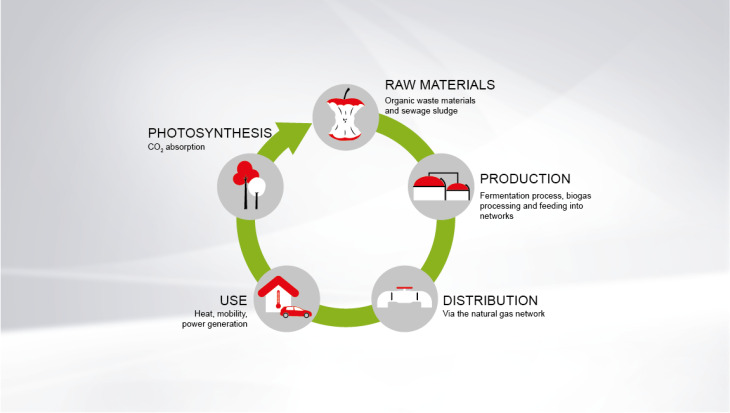Climate-friendly alternatives: the future for gas

Climate-friendly alternatives: the future for gas
Biomethane and hydrogen are up-and-coming alternatives to heating with natural gas. Climate-friendly solutions are being developed as a matter of urgency in the production of sustainable gaseous energy sources and in gas condensing technology.
- Blog
- End customer / Investor
Climate-friendly alternatives: the future for gas
The road to climate neutrality requires alternatives both to oil and to conventional gas heating systems. Unlike energy sources that are on the way out, such as coal and fuel oil, gas heating has a decided advantage in the evolution of energy production: it can be adapted to the changing climate policy and be made greener. The environmental credentials of gaseous fuels vary depending on the production processes involved and the efficiency of the heating technology used. Not all gas is alike, and not all boilers are alike.
Green alternatives to natural gas
The characteristics of biomethane make it almost a twin to natural gas. However, it is produced sustainably from biogenic waste: food waste, damaged timber, sewage sludge or manure from the agricultural industry are processed into raw biogas via fermentation. This can then be fed into the existing gas networks in the form of biomethane. Electricity is only needed to control the plants. Another benefit is that the value created remains with the specialised farmers or recycling facilities in the region.

All gas condensing boilers from Hoval can already be operated with up to 100% biomethane. If biomethane makes up at least half the mixture of gases, the CO2 emissions are reduced by 30% – without any additional capital investments. In general, a combination of electrification and regenerative gaseous energy sources is the most sustainable approach to the heating of the future. This is because a dramatic increase in the use of electricity would result in a huge expansion to power plants and electricity networks, while for green gas, the existing infrastructure can be used or adapted at relatively low expense.
Hope for the future: hydrogen
Hydrogen has a key role to play in the energy transition. The chemical element H2 is present in almost unlimited abundance on our blue planet, and after its combustion practically all that remains is water vapour. The environmental footprint of this energy source is determined by the way it is produced, however. The gas can only be produced in a CO2-neutral way via electrolysis using electricity from sustainable sources, while “grey” hydrogen actually increases the greenhouse effect.
For this reason, H2 is categorised as follows:
- Green hydrogen: produced from water + surplus green electricity
- Blue hydrogen: produced from methane + surplus green electricity
- Grey hydrogen: produced from methane + electricity from fossil fuels
Preparing heating systems for H2
Intensive research is underway into the many possibilities offered by hydrogen, with funding extending into the billions, and yet a complete transition appears unrealistic in the near future. In the meantime, the proportion of hydrogen in gas networks is set to increase steadily. Renewable energy in the form of green hydrogen – produced from surplus electricity generated in the summer via photovoltaics and hydropower – can be stored for heating requirements in the winter, for example. Hoval is actively supporting these developments and is making its gas condensing heating systems suitable for operation with hydrogen. All new appliances in the EU must be hydrogen-compatible by 2025 at the latest. The new UltraGas condensing boiler is already well on its way to being H2-ready.
A leap towards reaching climate goals

Only a clever mix of modern forms of energy can safeguard the supply to homes and businesses while protecting the climate. Existing gas networks, the use of surplus electricity or organic waste, highly efficient heating technology, and ongoing research into climate-friendly solutions are strong arguments in favour of gas as the heating of the future.
